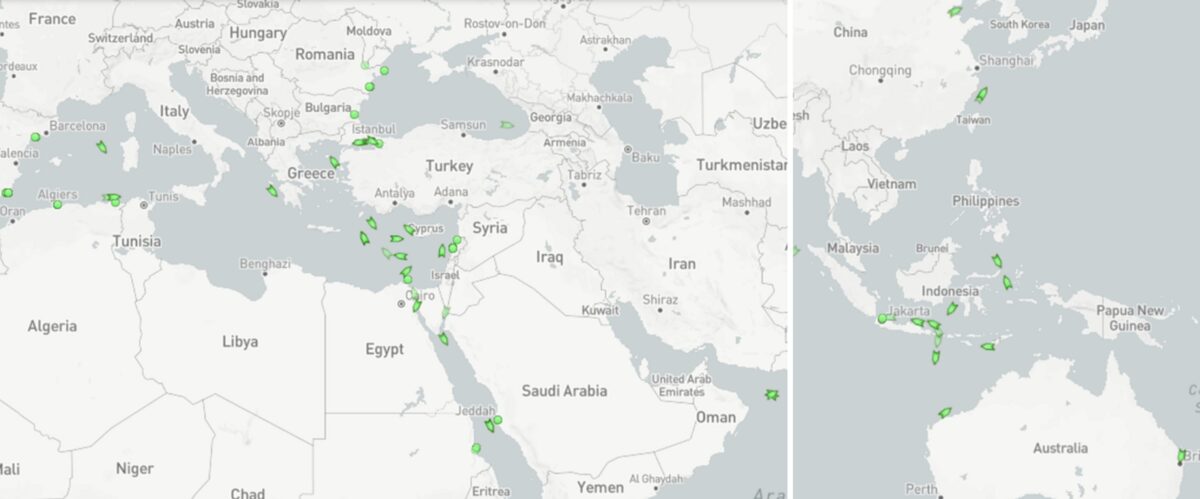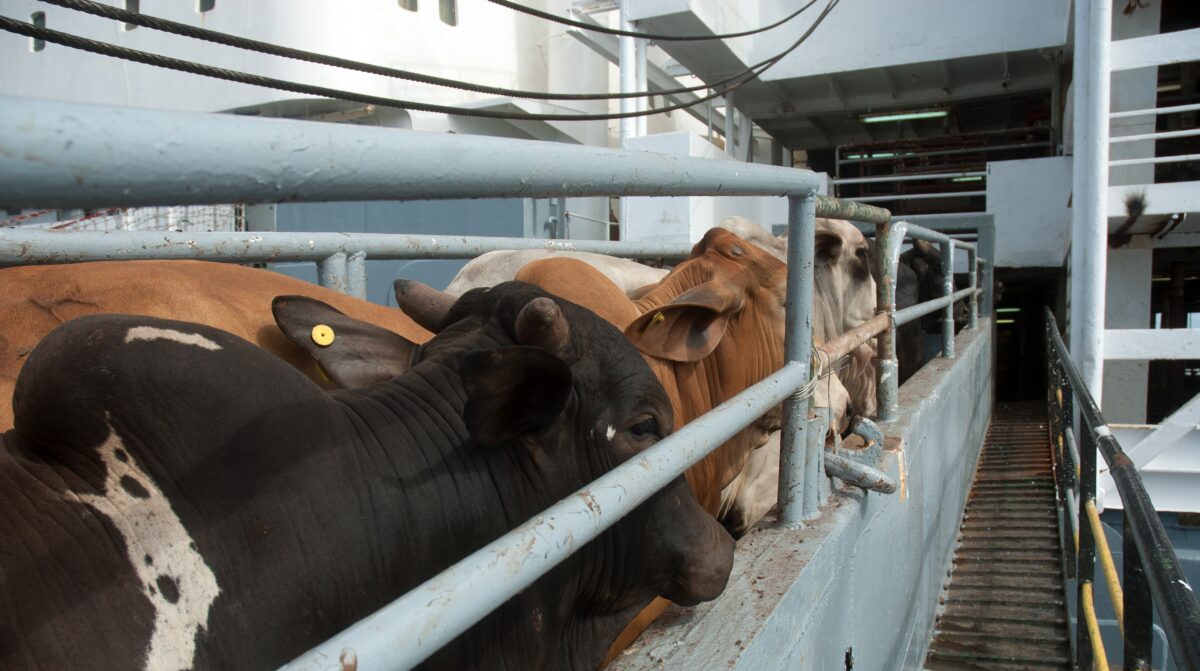Shipping has suffered its share of reputational problems through the years, from pollution to allegations of price gouging. But of all the world’s ocean trades, livestock shipping is in a reputational class all its own. Decade after decade, vessel casualties and reports of animal cruelty keep piling up.
Yet another major accident occurred this month: On June 11, the livestock carrier Al Badri 1 capsized after leaving its berth in Suakin, Sudan, on the Red Sea, with 15,800 sheep onboard. All crew were saved but 15,100 sheep drowned.
The Tanzanian-flagged vessel was bound for Saudi Arabia. It listed and capsized after reportedly being overloaded. The Al Badri 1 was built 49 years ago as a roll-on, roll-off cargo vessel. It was later converted into a livestock carrier.

The latest tragedy echoes the highly publicized “death ship” incident in November 2019: The livestock carrier Queen Hind capsized in the Black Sea, soon after it left Romania en route to Saudi Arabia. Of the 14,600 sheep initially believed to be aboard, only 180 survived. Video and images of the accident brought widespread attention to the ocean livestock trade.
The Palau-flagged Queen Hind was built in 1980 as a car carrier and converted into a livestock carrier. During salvage operations, divers discovered that additional decks were installed to increase animal capacity that were not in the vessel plans. The extra decks were jammed with dead sheep; the total number of animals that drowned is believed to be much higher than first thought.
Long history of livestock shipping casualties
Ships are more likely to capsize if they’re older, converted, carry destabilizing loads of animals, and registered in flag states with weaker safety records. According to Lloyd’s List, which sees an urgent need for stricter regulation, there have been seven total losses of livestock carriers in the past decade, leading to the deaths of 50,000 animals and 170 seafarers.
Among the worst casualties: On August 14, 2020, the Gulf Livestock 1 — a converted 2002-built container ship — left New Zealand with 5,867 live cattle aboard, destined for China. Two weeks later, it lost propulsion in a typhoon and sank in the East China Sea. All of the animals and all but two of the 43 crew perished. (New Zealand temporarily suspended exports of livestock after the accident; the trade has since resumed but a permanent ban on live sheep and cattle exports goes into effect on April 30, 2023.)
On Oct. 6, 2015, the Lebanese-flagged livestock carrier Haidar, a converted containership built in 1994, capsized at the berth in Barcarena, Brazil with 5,000 cattle onboard. Thousands of cattle drowned (video here).
On Dec. 17, 2009, the Danny F II — a 1975-built converted car carrier — sank off Lebanon. Of 83 passengers and crew, 40 survived. The 17,932 cattle and 10,224 sheep onboard went down with the ship. Efforts to rescue the humans were reportedly hampered by too many floating animal carcasses.
Animal suffering en route
Sheep and cattle are shipped alive, and not sent as meat in reefer containers, to countries where refrigeration is limited. In Muslim countries, live animals are imported for “halah” meat. In Saudi Arabia, livestock is imported for sacrifice during the Hajj pilgrimage. Exports of live animals by sea are an important source of income for some countries. Different cultures have different views on animal rights.
Criticism of livestock shipping is not just about animals needlessly dying before they can be eaten, whether because the ship capsizes or because of deadly conditions onboard. It’s also about the suffering of the animals that survive the trip. In the EU, a major exporter of livestock, the law (which critics say is ineffectual) states that “all animals shall be transported in conditions guaranteed not to cause them injury or unnecessary suffering.”
Four months before the Queen Hind accident, the EU commissioner of health and food safety pleaded for Romania to block shipment of 70,000 sheep to the Middle East due to extreme heat conditions. The shipments went ahead anyway. Activists claimed that hundreds of sheep died en route.
In 2018, a whistleblower provided video to activists revealing inhumane conditions aboard the livestock carrier Awassi Express. During a voyage from Australia to the Middle East in 2017, 2,400 sheep died of heat stress. Following public outcry over an Australian “60 Minutes” report on sheep being “cooked alive,” the Australian government instituted new regulations for the trade (Video here. Warning: graphic content).
54% of livestock carriers built 40 or more years ago
The livestock carrier fleet is not entirely older, converted vessels. Netherlands-based Vroon operates 13 purpose-built livestock carriers. Between 2013 and 2016, it launched seven new livestock carriers; according to Vroon, the ships’ animal-welfare facilities exceed Australian regulations.
But Vroon is the exception. Fleet data provided to American Shipper by U.K.-based VesselsValue shows 143 livestock carriers currently in operation. Just 21% of the total, or 30 ships, are purpose-built livestock carriers. The remaining 79% are conversions.
VesselsValue data shows that the fleet has an average age of 28 years. Ten percent are 10 years or younger, 5% are 10-20 years old, 15% 20-30 years old and 16% 30-40 years old. The majority of livestock carriers on the water today — 54% — are 40 years or older.

New voyages, ancient ships
Ship-position data from MarineTraffic shows that livestock carriers primarily operate in the Black Sea, Mediterranean, Red Sea and Persian Gulf, as well as off Australia, Indonesia and China.

A few examples of voyages currently underway: The vessel Abdulla is now laden with livestock loaded in Romania, en route to Damietta, Egypt. The ship was built 42 years ago as a general cargo vessel and converted to a livestock carrier in 2016. It is flagged with Tanzania. Prior to its conversion it was flagged with Bolivia, Georgia and North Korea.
Another vessel, the Pacific M, is laden with livestock loaded in Romania. It is headed toward the Suez Canal, passing the Greek islands on Sunday. The Pacific M is flagged in Togo and managed out of Syria. It was converted from a general cargo ship to a livestock carrier in 1984. It was built 52 years ago, in 1970, back when Richard Nixon was the president of the United States and Simon & Garfunkel’s “Bridge over Troubled Waters” was the number-one song.
Click for more articles by Greg Miller
Related articles:
- “Death ship” capsize kills over 14,000 sheep (with video)
- Animal deaths on livestock carrier spark widespread outrage
- Shipping suffers wave of spills, fires, collisions and lives lost











